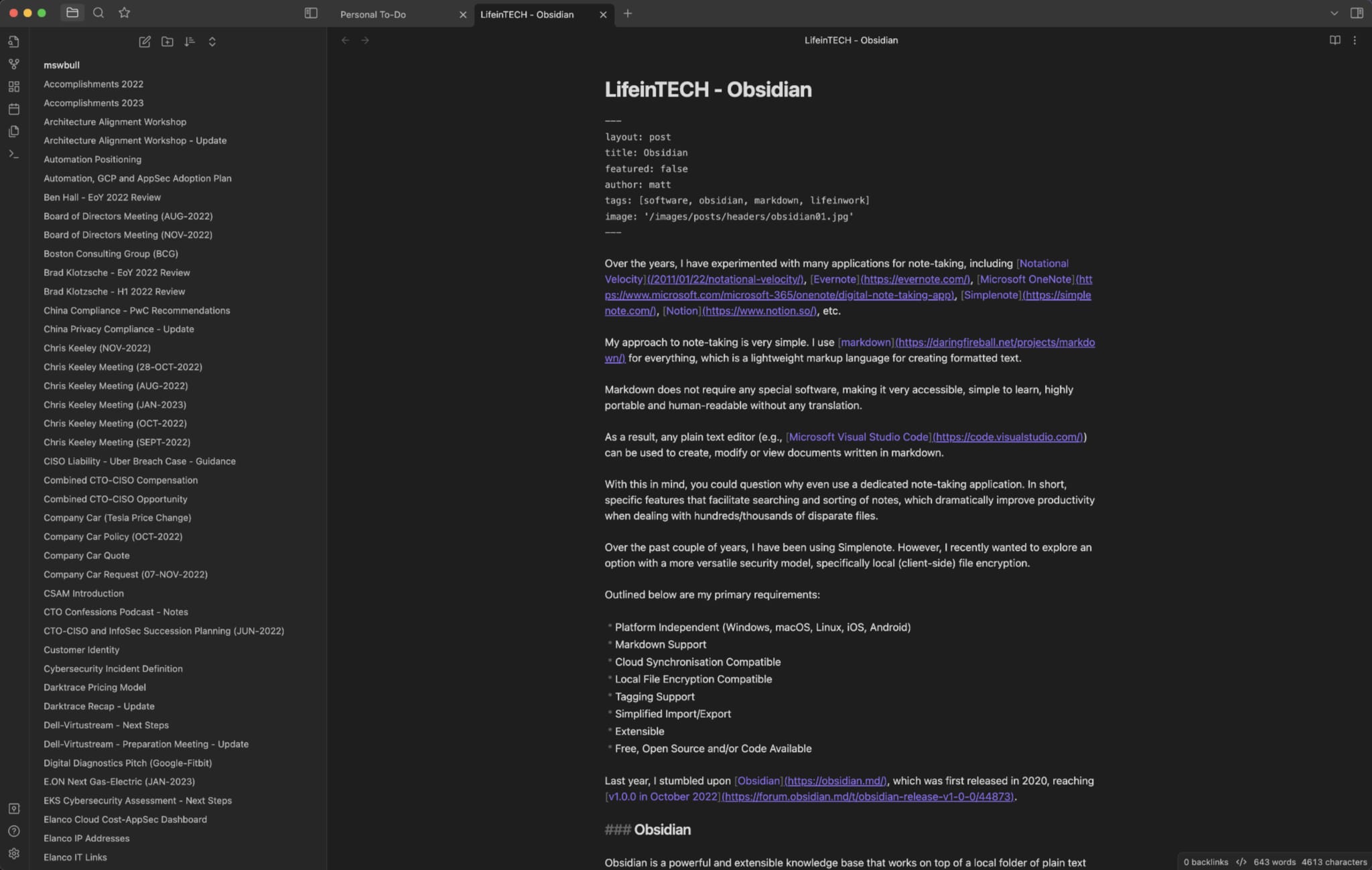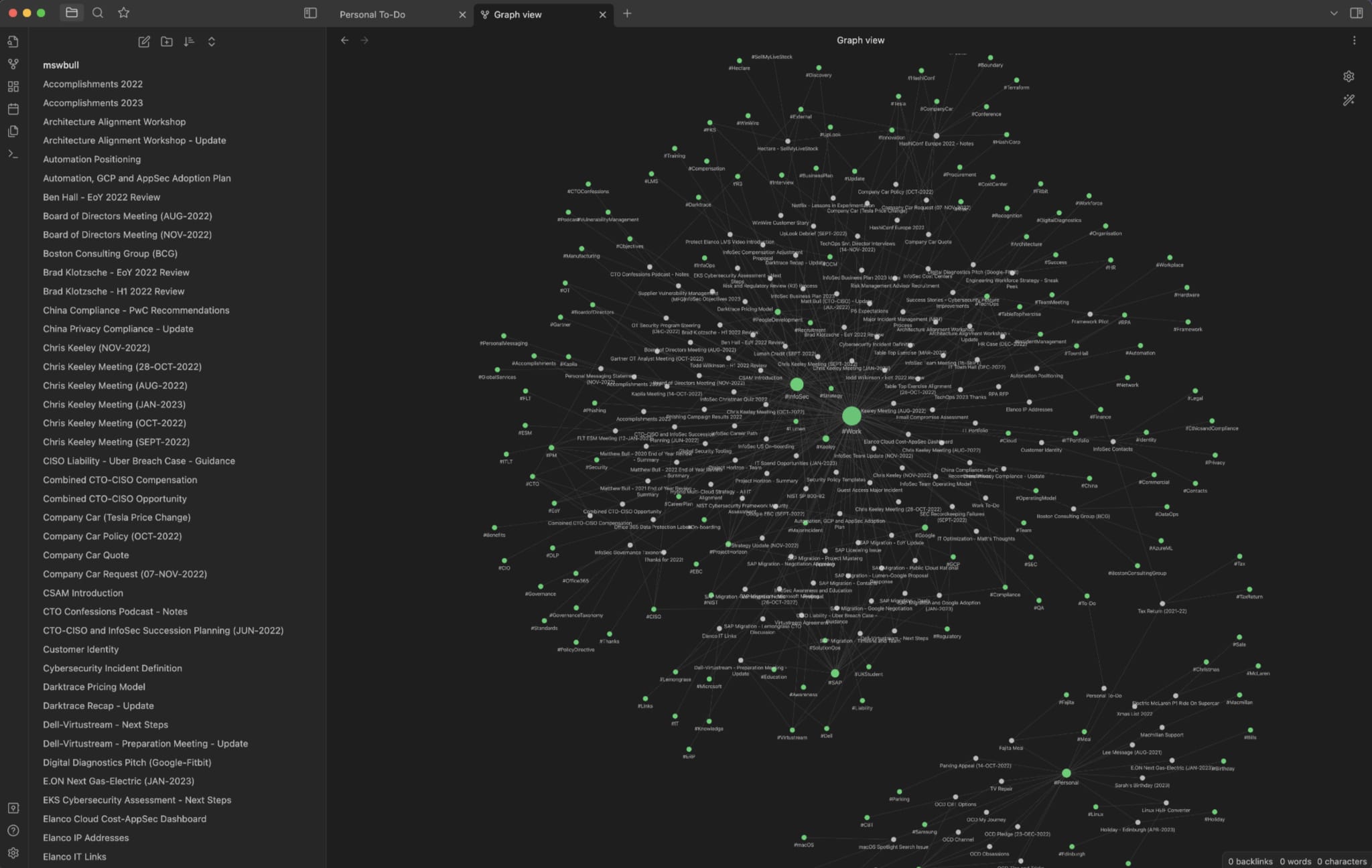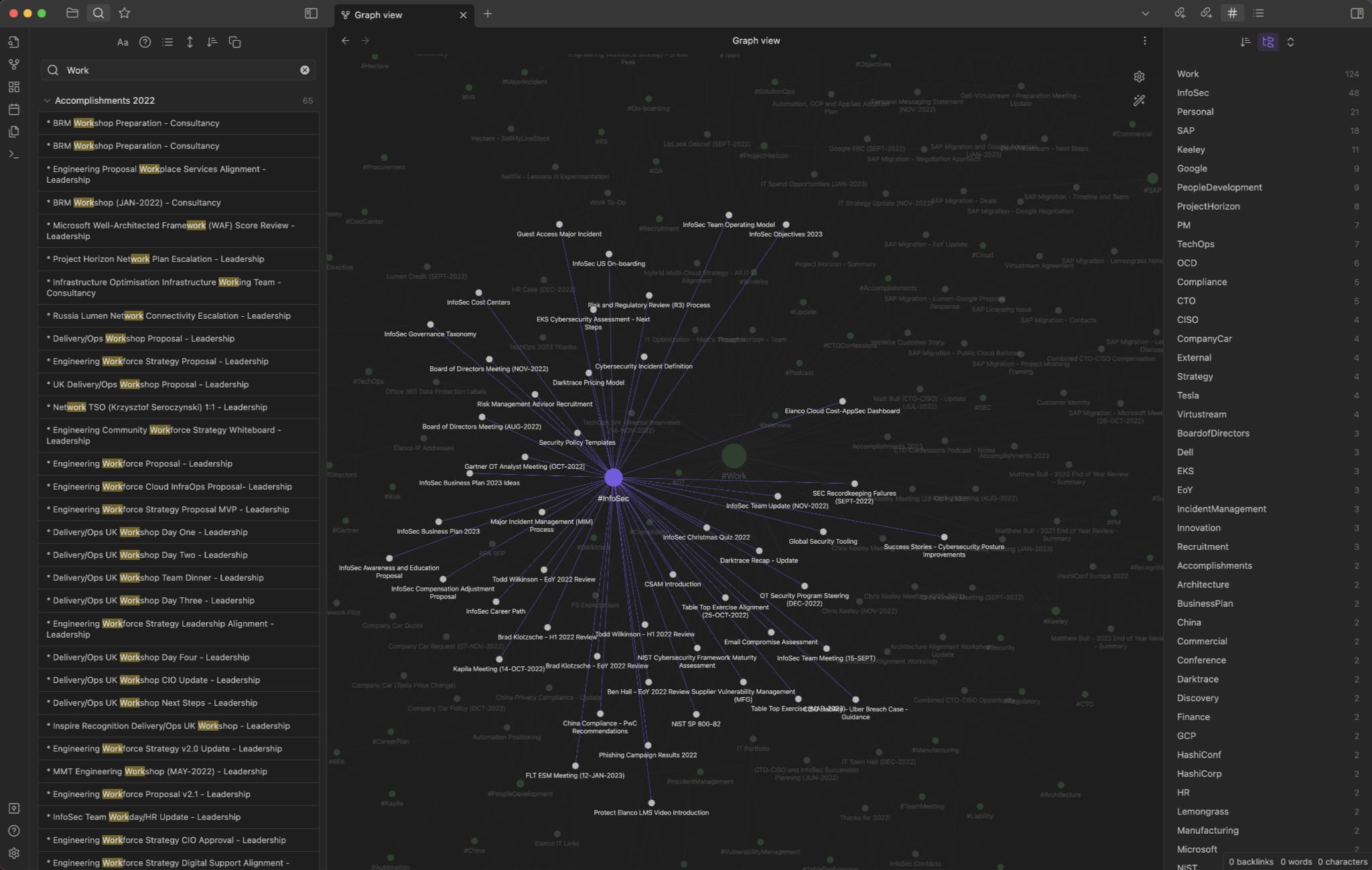Obsidian
Over the years, I have experimented with many applications for note-taking, including Notational Velocity, Evernote, Microsoft OneNote, Simplenote, Notion, etc.
My approach to note-taking is very simple. I use markdown for everything, which is a lightweight markup language for creating formatted text.
Markdown does not require any special software, making it very accessible, simple to learn, highly portable and human-readable without any translation.
As a result, any plain text editor (e.g., Microsoft Visual Studio Code) can be used to create, modify or view documents written in markdown.
With this in mind, you could question why even use a dedicated note-taking application. In short, specific features that facilitate searching and sorting of notes, which dramatically improve productivity when dealing with hundreds/thousands of disparate files.
Over the past couple of years, I have been using Simplenote. However, I recently wanted to explore an option with a more versatile security model, specifically local (client-side) file encryption.
Outlined below are my primary requirements:
- Platform Independent (Windows, macOS, Linux, iOS, Android)
- Markdown Support
- Cloud Synchronisation Compatible
- Local File Encryption Compatible
- Tagging Support
- Simplified Import/Export
- Extensible
- Free, Open Source and/or Code Available
Last year, I stumbled upon Obsidian, which was first released in 2020, reaching v1.0.0 in October 2022.
Obsidian
Obsidian is a powerful and extensible knowledge base that works on top of a local folder of plain text files.
At its core, Obsidian is a markdown editor and viewer.

Obsidian stores all notes in a vault. A vault is essentially a collection of markdown files (notes) with some associated metadata files to maintain the user-specific Obsidian configuration.
All files (including the metadata files) are completely portable and can be viewed, modified, copied, and deleted outside of Obsidian. Therefore, there is no need to rely upon proprietary import/export capabilities, as all files can be accessed directly from the filesystem.
Another advantage of this approach is that the vault can be stored anywhere, including your favourite cloud synchronisation service (e.g., Microsoft OneDrive, Google Drive, Dropbox, Nextcloud Files, etc.)
This approach means that Obsidian notes can inherit the security and record retention model associated with these services (versioning, encryption, multi-factor authentication) and/or can be locally secured (local encryption) before cloud synchronisation.
Obsidian also includes features to facilitate searching and sorting. Specifically, a knowledge graph, providing a unique view into the notes, highlighting connections as well as allowing for custom groups, filters, and display options.

The knowledge graph is enhanced through tags, backlinks and outgoing links, which apply additional context to each note, further broadening the view and highlighting connections.

These core features can be extended through a massive array of plugins, supported by a thriving community.
Overall, I have been very impressed with Obsidian and was able to transfer my existing markdown notes with almost no effort. I love the knowledge graph and am excited to explore the plugin options (whilst hopefully maintaining my desired simplicity).
Obsidian is available for Windows, macOS and Linux for free. However, unfortunately, the software is not open source. Thankfully, you can examine the source code (some parts are minified/obfuscated/packed) from the developer console, which is a positive step compared to other closed/proprietary applications.